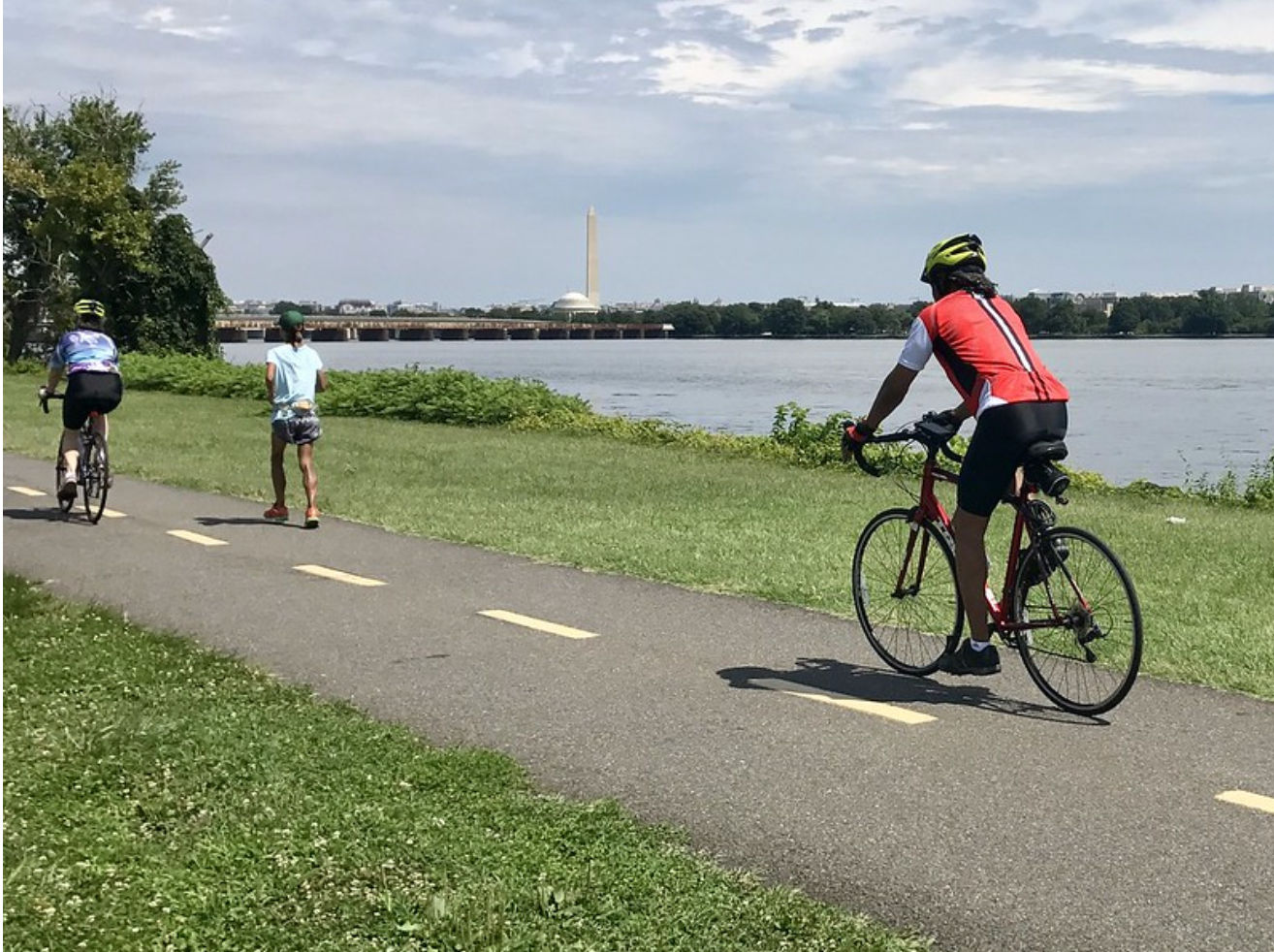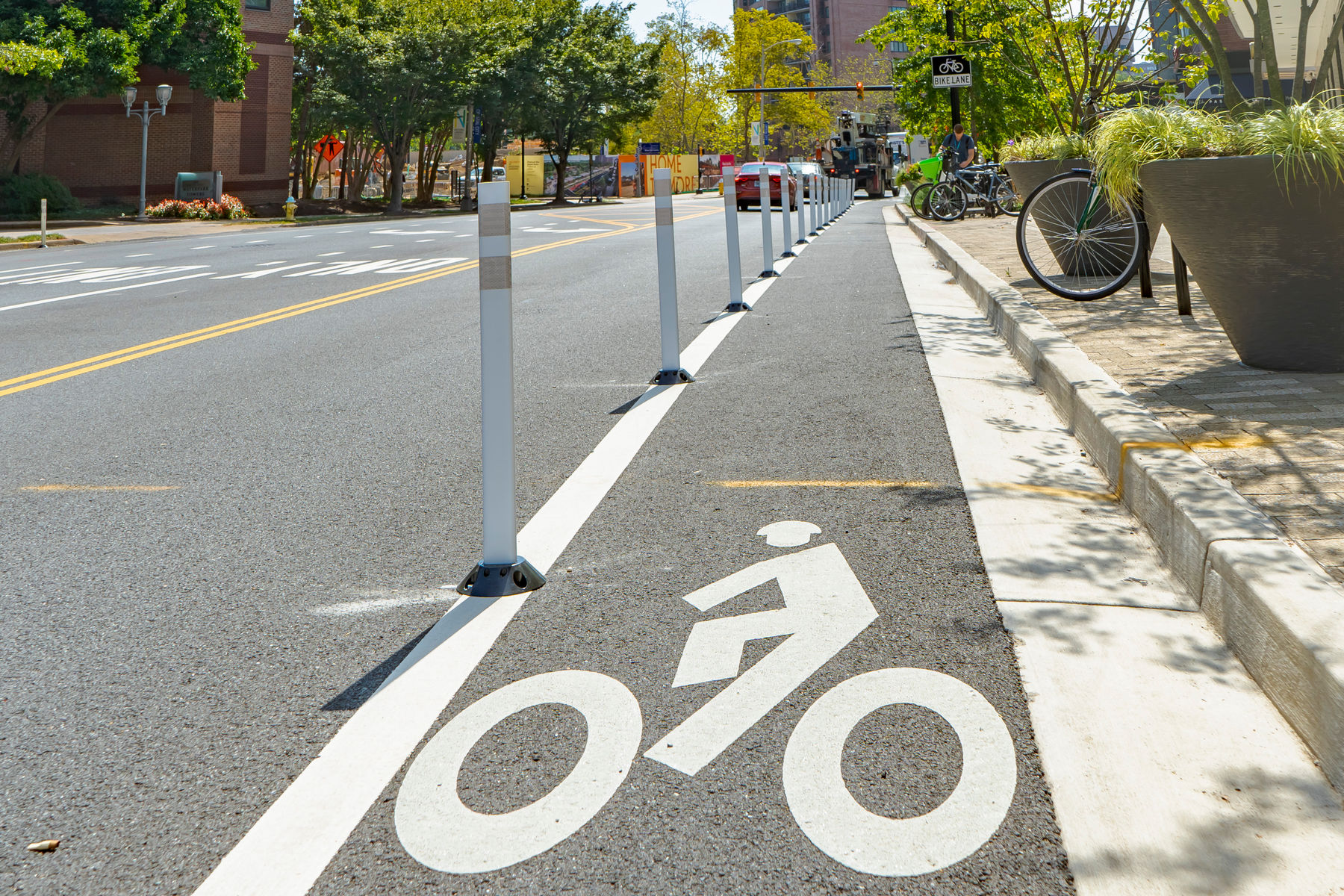The vital role of the Mount Vernon Trail in National Landing
By Luke Fichter
As the urban landscape of National Landing undergoes its transformative journey into a dynamic and bustling hub, its emphasis on sustainability and active living becomes more pronounced. Central to this green ethos is the Mount Vernon Trail, an 18-mile multi-use trail that snakes along the Potomac River from George Washington's Mount Vernon Estate to Theodore Roosevelt Island. This trail is not only a recreational asset but also a critical component in supporting and expanding the biking community of National Landing.

The Mount Vernon Trail offers an escape from the urban rush, connecting cyclists, joggers, and walkers with nature while providing breathtaking views of landmarks like the Washington Monument and the U.S. Capitol. It acts as a green artery, pumping vitality and accessibility through the area. For National Landing, which is rapidly developing with new businesses, residences, and cultural spaces, the trail provides an essential link between work and leisure, enabling a lifestyle that values health, sustainability, and connectivity.

As concerns about environmental sustainability grow, cities across the nation are looking for ways to reduce their carbon footprint. National Landing's biking infrastructure, epitomized by the Mount Vernon Trail, plays a crucial role in this mission. By offering a well-maintained and safe route for cyclists, the trail encourages residents and workers in the area to opt for biking over driving. This shift not only helps reduce traffic congestion and air pollution but also supports local efforts to meet environmental goals.

The presence of the Mount Vernon Trail also has significant economic implications. Biking trails in urban areas have been shown to increase property values, enhance retail sales, and attract tourism. For local businesses, the influx of cyclists can mean a steady stream of customers, particularly for cafes, bike shops, and small retail outlets that cater to the needs of trail users.

Socially, the trail fosters a sense of community and belonging. Regular users often form informal groups and networks, organizing rides or participating in trail maintenance days. For newcomers to National Landing, the trail offers a welcoming environment to meet neighbors and engage with the community.

The Mount Vernon Trail is much more than just a pathway along the Potomac; it is a backbone of the National Landing biking community. It exemplifies how infrastructure can cater to sustainability, health, and social connectivity, enhancing the quality of urban life. As National Landing continues to evolve, the trail’s role will undoubtedly expand, helping to shape a more sustainable and vibrant urban environment. Whether you are a daily commuter or a weekend visitor, the Mount Vernon Trail offers a glimpse into the future of urban transportation and community planning, where every pedal stroke takes us closer to a greener, healthier future.